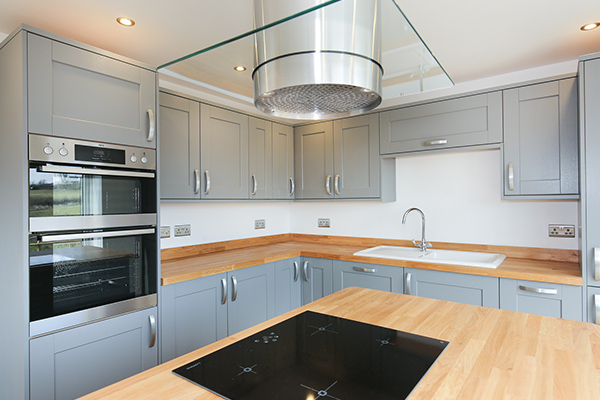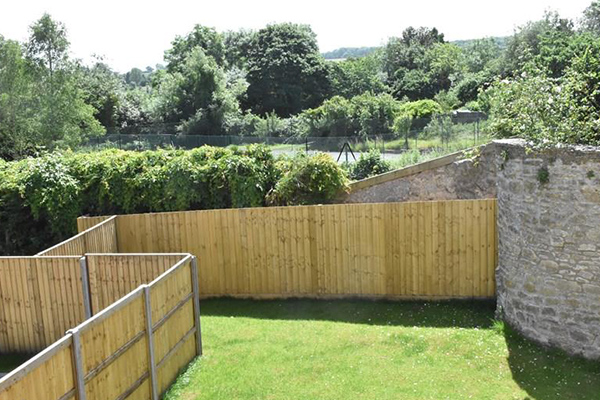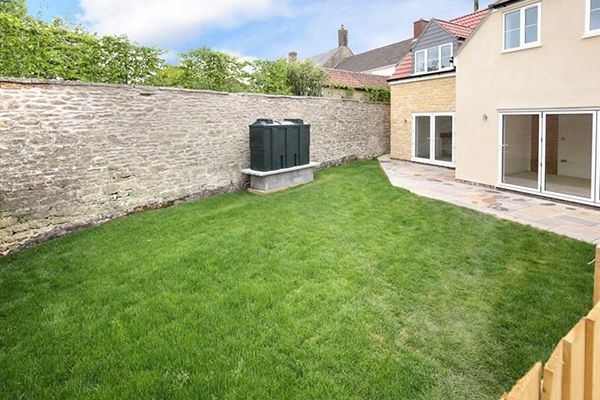
by ashishrana | Sep 25, 2019 | House Extension Projects, Planning Permission
If you are looking to update your home, it’s important to know whether or not you require planning permission before work starts. The last thing you want to do is to start a project – or finish one – and then be told you can’t actually do that!
Here’s a look at some of the things you can usually do without planning permission.
1. Most Home Extensions
Home extensions are usually considered a “permitted development.”
However, there are certain rules to be mindful of regarding the type of extension you want to build.
You won’t need planning permission for your home extension if:
- The extension is less than half of the area of land around the original house.
- The extension is not forward of the elevation or side elevation of a public highway.
- The extension isn’t higher than the highest part of the current roof and the materials used are the same or similar in appearance to your existing house.
Furthermore, there are specific measurement requirements for either single-storey or multi-storey extensions.
For single-storey buildings, you can build an extension without needing to apply for planning permission if:
- The extension doesn’t extend the original rear wall further than three metres in the case of semi-attached homes and four metres for detached houses.
- The height of the rear extension is no higher than four metres.
- The side extension has a maximum height of four metres and the width is no more than half of that of the original house.
Two-storey extensions don’t require planning permission if they don’t extend beyond the rear wall of the original house by more than three metres. In addition, the extension must be no closer than seven metres to the rear boundary of the house.
The rules differ for flats and maisonettes, as well as for listed buildings.
If you are planning an extension to your home, it’s always best to talk to your local council’s planning department first.
Note that across the UK, council planning departments will often be bundled with other areas of the council’s responsibility. .For example, one council might have a “Planning and Development” department, while another has a “Planning and Environment” department., but so long as their title has the planning element in it you’ll be on the right track.
2. Erecting New Outbuildings
Planning permission is not generally needed for outbuildings such as sheds and garages. However, you must ensure the building is of a reasonable size and no higher than four metres. The outbuildings can’t take up more than half of the land around the original property either or you will need planning permission.
3. Paving Your Front Garden
If you use a porous material to pave your front garden, you can do the paving without planning permission – no matter the size of the pavement.
If you live in a conservation area, then you should double check what you can and cannot do. For example, cutting down part or all of a tree to pave or remodel your garden may require planning permission in this situation, particularly if the trees in question are subject to a Tree Protection Order.
4. Updates to Windows, Doors, External Walls and Your Roof
In most instances, you don’t need planning permission in order to replace your existing windows or doors. Likewise, you are allowed to improve, maintain and repair existing walls and roof without permission.
Living in a conservation area or in a listed building are the scenarios where you would likely need to take planning advice and potentially make an application.
5. Erecting Wind Turbines and Solar Panels
If you’d like to use renewable energy, you don’t need planning permission to install wind turbines or solar panels.
6. Indoor Renovations and Repairs
Almost any type of indoor work you want to do can be done without planning permission. You can freely plan to install a new kitchen or convert your loft, for example. However, be aware of possible building regulations that you may have to adhere to.
7. Erecting or Replacing Fences, Gates and Walls
You won’t need planning permission for any type of fence, gate or wall if the structures are not next to a road and are below a metre or, in some cases, below two metres.
When Do You Need Planning Permission?
The above are the home renovation and building projects you can undertake without planning permission, but it’s important to note that certain projects do require planning permission.
The most notable exclusion to the above is the treatment of listed buildings. In almost all instances, if you live in a listed building, you will need planning permission. For example, you need planning permission for changing your windows, doors and external walls in all instances when you live in a listed building. Furthermore, as we have noted in a couple of the examples above, if you live in a conservation area you might require planning permission for cutting, removing, and planting trees, or changing the appearance of your home.
Help with Your Building Projects
It’s a good idea to talk to building experts when you are planning home renovation or extension projects. They are able to advise you in terms of the permits you might need, as well as help planning the whole process to ensure it goes smoothly. As well as consulting with the builders who you are discussing your project with, most councils will generally offer pre-planning advice at no cost.
For pre-planning advice and information regarding planning applications, as well as how to apply to them, contact your local planning authority.

by ashishrana | Jul 19, 2019 | Planning Permission
Turning your idea of building your own home into a reality starts with sourcing a plot of land.
Let’s look at how you can find a plot of land, and things it’s worth looking out for when conducting your search.
What Is the Main Hurdle in Finding a Plot of Land?
Finding available land is not that easy in the UK.
According to FullFact.org, around 90% of land in England is not available for building even though there are efforts to increase the rate of release of sites for self-builders.
Furthermore, current planning policies restrict development boundaries around existing settlements. High-demand areas tend to be picked by property developers and councils, leaving fewer options for self-builders. That’s why for many, finding a plot through brownfield sites, which are those that have previously been developed, is often the easiest option.
What are The Main Types of Self-Build Plots?
There are several types of plots available for self-build use:
- Brownfield Land – This land has been previously developed on and councils like to sell these plots for further development. However, these plots often come with design restrictions.
- Greenfield Land – This is the name used for land that hasn’t been built on. These are relatively hard to find because such land is often in the hands of the large property developers.
- Buy-to-Demolish – You could also buy land with an existing house and demolish the property on it. This can add to your costs but it can be an option to consider when you’re looking for land to build on.
- Designated Areas – Self-building in these types of locations is quite difficult because it comes with strict controls.
If you’re buying land for the specific purpose of building a home, then you should always buy land with planning permission. This planning permission can come in two types: outline planning permission (OPP) or detailed planning permission (DPP). DPP will have restrictions in terms of accepted designs, but that doesn’t mean you should be too afraid of buying land with DPP. This is because you can often submit a new planning application for a different design, and it won’t revoke the existing permission.
Buying land without planning permission is not advisable because you might end up with land but no right to build on it. What you can do is submit an offer for a plot of land, conditional on planning permission for future development being granted. If you don’t get planning permission, you walk away from the purchase of the land.
Different Ways of Sourcing Land for Property Building
The above gives you an idea of the options available to you in terms of buildable land, but how can you start looking for available plots? There are a number of good routes to take.
The easiest option is to go online to look for plots of land. A number of websites, such as BuildStore, feature listings of land for sale. You can even find land for sale through Rightmove by refining your search to show “land” only results.
You can also register with estate and land agents. They often know in advance when land might be released and come available, and they can direct you to right sources. Local surveyors and architects are also a great source of information.
Plots of land are also sold through auction and, particularly if you don’t mind buying land-to-demolish or to rebuild, these can be a good option. You could also sign up with the UK Government’s Right to Build scheme, which can help you gain planning permission easier than you otherwise would be able to.
Narrowing Your Search to Make Finding Land Easier
Finding land to build a property can take a lot of time and it’s important to start your search as early as possible.
One key to success is to narrow your search but if possible to also be flexible with your goals.
Choose your area carefully before you start looking for land. It might seem counter-intuitive, considering that land for sale can be scarce, but it will save you time and money to focus on a single area rather than casting your search over a wide field.
If you don’t seem to have any luck during your initial search, revise your approach and consider expanding your search, but remember to start by focusing on a specific region, trying be flexible with the kind of land you are looking for and use the tips above to help you find suitable land. The process won’t be easy, but when you find the perfect piece of land and know you can build your new home on it, it will be worth it.

by ashishrana | Jul 3, 2019 | House Extension Projects, Planning Permission
If you are looking to make your home bigger, there are certain things to take care of before you start to design and build any extension to your property.
One big question is: Do you need planning permission to build an extension onto your home?
Criteria for Planning Permission
With planning permission for home extensions, there are specific considerations that determine whether you need it or not.
The main requirement for planning permission depends on the type of home you are looking to expand. Different rules apply to flats, maisonettes, listed buildings, and houses, for example. The information here refers mainly to houses.
The law was recently updated and you can find the original legislation on the UK Government website, with the main points explained below.
Let’s look at the key factors that decide whether you need planning permission to build an extension onto your house.
The Size of Your Extension
You don’t need planning permission for a home extension if the size of the extension falls within the below parameters.
- The extension is no more than half of the area of land around the original building.
- The extension is not higher than the highest part of the roof.
- The maximum eaves and ridge height of the extension aren’t higher than the building.
If your plans and ideas for your extension falls outside of these rules, you’ll need to apply for planning permission.
The Type of Extension You Want to Build
Furthermore, there are specific rules regarding the kind of extension you want to build. This deals with whether you want a single-storey extension or not, and where the extension would be in relation to your home.
- For a rear extension to a single-storey, the extension shouldn’t add more than three metres to the original house if the building is semi-detached.
- For a detached house, the extension should extend the rear wall by more than four metres.
- The maximum height of a rear extension for single-storey homes should fall below four metres.
Anything bigger and you will need to apply for planning permission.
Side extensions for a single-storey house don’t require planning permission if they are no more than four metres high. The width must be less than half of that of the original house.
Extensions of multi-storey houses also have their own set of rules. If they don’t extend the rear wall of the original house by more than three metres, you won’t need planning permission. Two-storey extensions shouldn’t be closer than seven metres from the rear boundary of the property or you will need planning permission.
The Materials Used for Building the Extension
You can build a home extension without planning permission if you use materials that are the same or similar in appearance to those used in the existing house. If they differ a lot, especially in appearance, you will need to acquire planning permission.
The Closeness of a Public Highway to Your Property
One important thing to note is the closeness of public highways to your home. Even if the above, permitted development rules apply to your extension, you can’t build it if it would be, once finished, closer to a public highway. This includes by way of front elevation or sideways extension.
Notice that the above is not an exhaustive list of conditions and your house might have a specific set of restrictions and requirements. Consult with experts prior to launching your extension project to make sure you’re following the law. This doesn’t have to mean expensive consultations with property laywers – your local authority will often be able to offer free and extensive pre-planning advice and guidance.
How to Obtain a Planning Permission if You Need It
If your planned home extension doesn’t meet the above criteria and you need to obtain planning permission, seeking it is a relatively simple process. You have to submit a planning application to your local council – note that procedures vary slightly from council to council. Councils have a local development department, which can help you obtain the right paperwork. This will be important if, for example, you live in a conservation area and there are specific documents and requirements that you must submit alongside any planning application.
Once you obtain planning permission, keep in mind that you may still require further consent and approval before you can start building. Certain properties will have covenants that allow extensions only when you have written consent of the original developer or owner of the property. You should also keep in mind that certain extensions might not require planning permission but will need to meet with building regulations.
Asking for Advice
Building an extension without permission could end up costing you a lot of money, so while it is likely that you don’t need planning permission to get started with your project, there’s no harm in making sure.
Whether you consult with a property lawyer, a builder, or someone from the planning department at the local council, don’t be afraid to seek out advice prior to getting started. It’s better to be sure you’re building something you don’t need planning permission for than have any doubt and potentially end up spending thousands in legal fees later.




Recent Comments